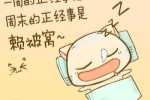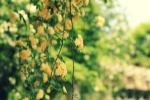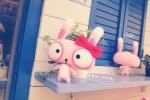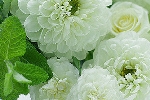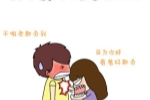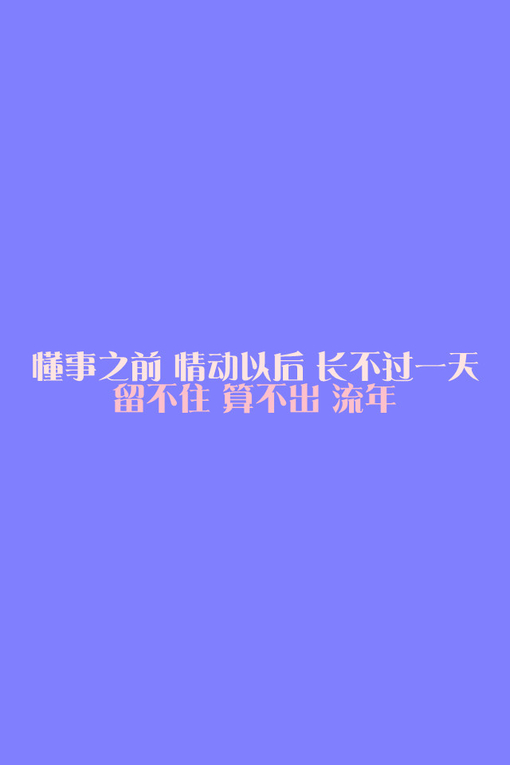
2020高考魔法训练作文热点押题【一】
2020高考魔法训练作文热点押题【二】
京剧言派创始人言菊朋,是蒙古族人,祖辈几代都是清王朝的武官。他在陆军贵胄学堂念书时就对京剧艺术特别有兴趣。毕业后,他在蒙藏学院某得了个小差事,收入很低,维持六口之家生活过得紧巴巴。可他千方百计要省出钱来去听戏。他特别爱看著名老生谭鑫培演的戏,不管是下瓢泼大雨还是大雪纷飞,他总是 脚踏钉鞋,手持雨伞,上戏院买张最便宜的票,潜心观摩谭鑫培的表演。十余年如一日,从不间断,他的足迹踏遍了北京城内各大戏院。
他不但刻苦、细心学习谭鑫培的表演艺术,而且还在学习别人的基础上不断创新,终于形成了自己的独特风格,在京剧界独树一帜,成为言派创始人。
2020高考魔法训练作文热点押题【三】
唐代书法家怀素以草书著称于世,人称“草圣”。他的草书,气势雄浑豪放有“骤雨狂风”之势。
他幼年为僧,寺院附近种值有一万多株芭蕉,每日摘采蕉叶练字。蕉叶用完了就用浅色漆盘和方木板练字,写满字迹后,擦掉再练。久而久之,竟把漆盘 和木板磨穿了。寺院的墙壁上,家具上,连僧人做袈裟的布上都写满了字。他每日勤奋刻苦练字,用秃了许多毛笔,堆集起来埋在山下,名曰“笔冢”。
2020高考魔法训练作文热点押题【四】
作为一名事业有成的香港人,曾敏杰始终心怀祖国。他热衷于内地的儿童公益事业,先后帮助多名脑瘫儿童进行康复治疗。玉树地震发生后,他又作为义工去灾区探望孤儿,发起公益活动,购买孩子们急需的炉子、棉鞋、帐篷等物资。就在将物资送往玉树最偏远的村寨时,他和同伴遭遇意外,不幸遇难。他被网民誉为“新阿福”,他的善心善举让我们看到,爱心无地域,真爱暖人间。
2020高考魔法训练作文热点押题【五】
笨鸟先飞。——元。关汉卿《陈母教子》
多识由博学。——宋。欧阳修《和圣俞》
五更起床,百事兴旺。——英国谚语
锲而舍之,朽木不折;锲而不舍,金石可镂。——《荀子。劝学》
德隳于惰,名立于劳。——宋。司马光《逸箴》
凿不休则沟深,斧不止则薪多。——汉。王充《论衡。命录》
书山有路勤为径,学海无涯苦作舟。——《古今对联集锦。治学联》
业精于勤,荒于嬉;行成于思毁于随。——唐。韩愈《进学解》
勤快的人汗水多;贪吃的人口水多。——蒙古谚语
斧子也能磨得像剃刀。——日本谚语
努力勤奋可以带来好运。——[美]富勒《至理名言》
只要功夫深,铁杵磨成针。——清。俞樾《茶香室丛书》
功到自然成。——明。吴承恩《西游记》
逆水行舟用力撑,一篙松劲退千寻。——董必武《题赠〈中学生〉》
人之为学,不日进则日退。——清。顾炎武《顾亭林诗文集。与人书一》
才自内发,学以外成。——南朝梁。刘勰《文心雕龙。事类》
韦编屡绝铁砚穿,口育手钞那计年。——宋.陆游《剑南诗稿。寒夜读书》
洞穴贯穿,弥见精勤。——《叶圣陶序跋集。〈中日战争〉序》
功崇惟志,业广惟勤。——《尚书。周书。周官》
没有时间,挤;学不进去,钻。——谢觉哉《学语集锦》
把惰性当仇敌。——恽代英《致宗白华》
要摘取果子的人必须爬上树。——[美]富勒《至理名言》
穷苦和学问是好友;富贵和学问是仇敌。——陶行知《学问之要素》
很少有什么东西是不能通过勤奋和技艺而获得的。——[英]约翰逊《拉塞勒斯》
凡是普通人能够做的事情,我们都可做,我的最大的好处是勤劳。——[英]莎士比亚《李尔王》
学如逆水行舟,不进则退;心似平原走马,易放难收。——《古今对联集锦。治学联》
那里有天才,我是把别人喝咖啡的工夫都用在工作上的。——《〈鲁迅全集〉编校后记》
笔成冢,墨成池,不及羲之即献之;笔秃千管,墨磨万锭,不作张芝作索靖。——宋。苏轼《东坡题跋。题二王书》
吾尝终日不食,终夜不被,以思,无益,不如学也。——《论语卫灵公》
2020高考魔法训练作文热点押题【六】
近年来,国人的舆论朝向似乎走向了一个歧路。每当与中国有仇恨的国家陷入不好的境地。中国人就似乎丧失了应有的理性与人文关怀,站在制高点幸灾乐祸。无情嘲讽。比如日本大地震。国人在事后的第一反应竟然不是对死去的生灵感到痛惜,而是大呼痛快。似乎在地震中,死的人数越多,就越能为国家泄恨一样。但其实在地震中死去的只是无辜的百姓,是一条条鲜活的生命。有人对生命的态度,可以说如果事不关己就冷漠无比。就如新闻中被暴打致死的女性同胞,不仅得不到国人的同情,虽然成为所谓爱国卫道士的抨击对象,引来冷嘲热讽,只不禁令人想起鲁迅笔下国人围观同胞被枪***的.情景。在中国经济发展了几十年的今天,国人的道德与良知还是没有一丁点进步,甚至出现了所谓的倒退。这是不是让人值得反思的事情,这不仅值得反思,细思起来还让人觉得惶恐,如果这种麻木不仁的舆论盛行,那我们的国家将会变成什么样子可想而知。
拒绝麻木不仁,回归理性。不要让所谓的爱国情怀成为你心理阴暗面宣泄的理由。
2020高考魔法训练作文热点押题【七】
Study the picture above carefully and write an essay entitled “The Adaptation of the Classical Literature”. In the essay, you should (1 describe the picture (2 interpret its meaning (3 give your opinion about the phenomenon. You should write about 200 words neatly on ANSWER SHEET 2. (20 points?
The picture gives us a view of a popular phenomenon: the adaptation of the classics. Some classical literary works, such as our four great classics i.e. A Dream of Red Mansions, Journey to the West, The Romance of the Three Kingdoms and Heroes of the Marshes, are all adapted to cater to some readers’ tastes. The traditional characters become so strange and the plots are totally different. It is so ridiculous that the precious literary treasures are allowed to be ruined so much.
As we all know, the classical literature is the representation of the outstanding art of our nation. Some familiar characters such as Monkey King express the good wishes of our common people. From them, we learn many good virtues such as honesty, bravery, justice etc. However, in those adapted works named “Bantering***”or “Reboiling***”, all plots are changed and all characters become somewhat watered clown. Some readers interested in reading burlesque works have high praise for them. But they never think of the negative effects of such adaptations on the average reader, especially to children. Children are the future of the nation. They always believe that what is in the books is the truth. Those adapted works will affect their outlook on life.
Therefore, some measures should be taken to restrict these adaptations. The real classics should be presented on the bookshelves to lead people to appreciate the real art.
2020高考魔法训练作文热点押题【八】
Study the two pictures above carefully and write an essay entitled “On Education of China” In the essay, you should (1 describe the pictures (2 interpret their meaning (3 give your opinion about the phenomenon .You should write about 200 words neatly on ANSWER SHEET 2. (20 points
[参考范文]
The two pictures look so similar at one glance, but they are totally different. In the first picture, a peasant boy, carrying a heavy bundle of rice straw is out of breath under the great pressure. His hope is to have a school to attend. In the second picture, a student is on his way home from school, a heavy bag of books on his back. What he wishes is that he didn’t have to go to school any more. How can the two boys at the same age have such different ideas about attending school?
The two pictures show some problems in the present education system in China. In the poor countryside, especially in some western parts of China, the education is also poor. There are no buildings for classrooms, let alone good teachers. Children there cannot have regular education. They are sometimes forced to leave their studies because their families cannot afford the necessary fees. However, the situation is totally different in the cities. Almost all the children in the cities can have regular education. They can enjoy the bright classrooms and adequate facilities. But they have their own problems. What they face is the endless homework, which puts so much pressure on them that some students don’t want to continue their studies.
Given the problems above, our government has taken some measures. “The Hope Project” has been in operation to ensure that children in the poor areas can achieve education. Some strategies have also been put into force to reduce the pressure on the students. Teachers are asked not to give too much homework. Emphasis should be put on the improvement of the quality of the students. However, there is a long way to go in the improvement of our education conditions. The whole society should be mobilized to make some contributions to our education.
